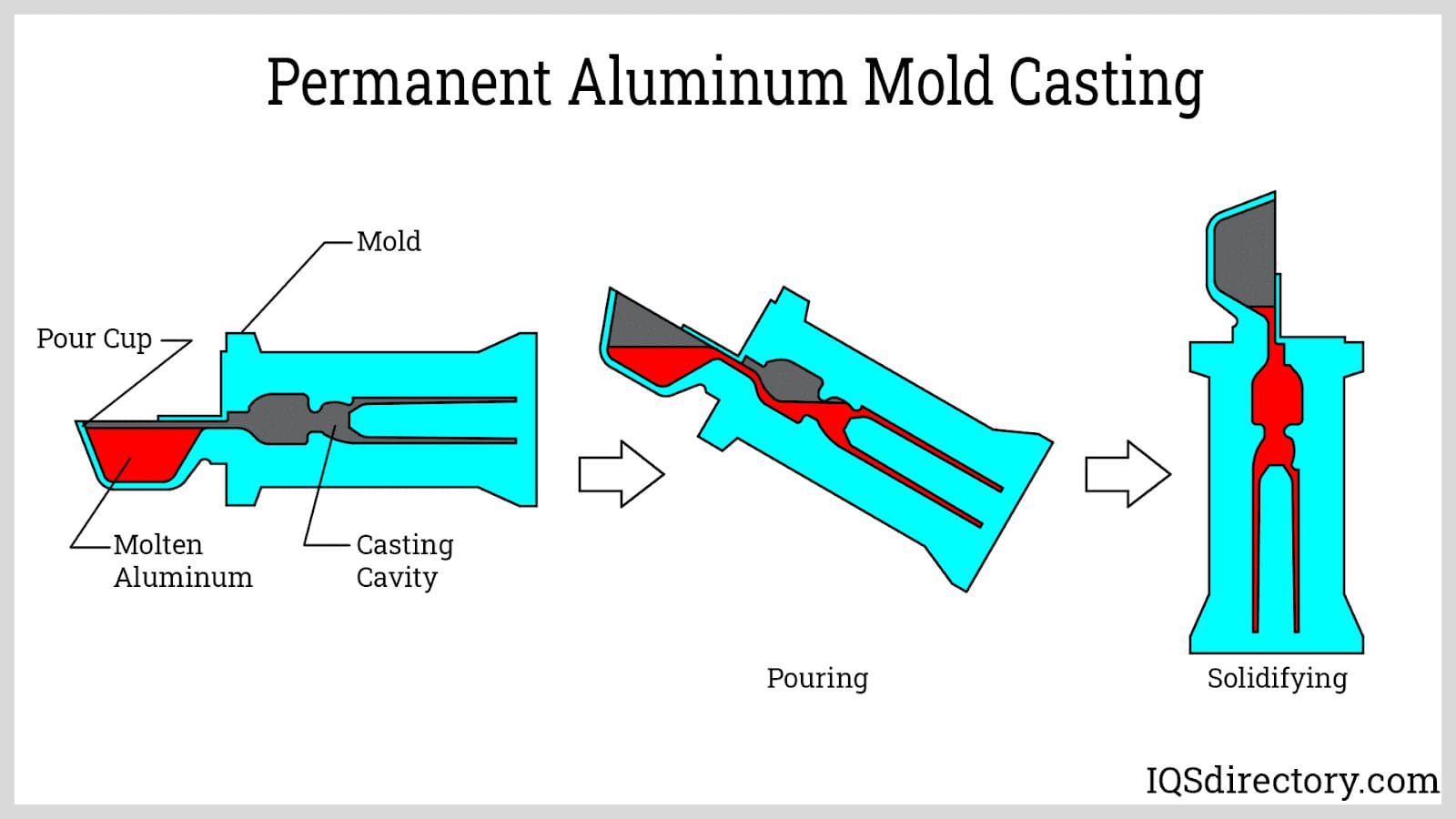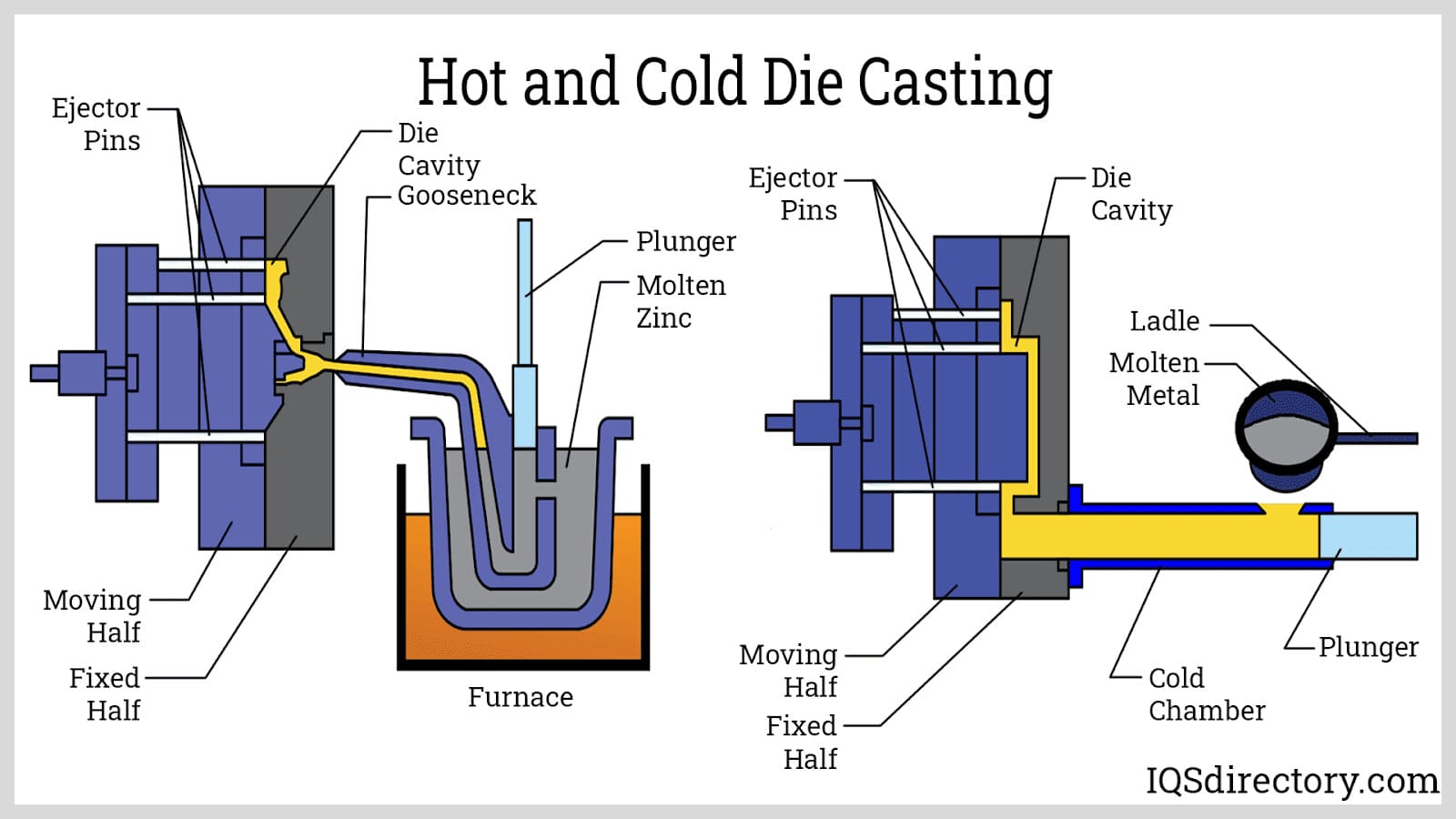The role of Wisconsin Aluminum Foundry in modern industry
Wiki Article
Exploring the Diverse Applications and Benefits of Aluminum Foundry in Modern Production
Aluminum shops are essential in today's manufacturing landscape. They produce elements that offer numerous markets, consisting of vehicle and aerospace. The lightweight nature of Aluminum combined with its sturdiness makes it a favored selection. In addition, cutting-edge spreading methods enhance production performance. Nonetheless, the effects of these improvements on sustainability and future fads necessitate more expedition. What possibilities and difficulties lie in advance for Aluminum factories in this developing market?The Function of Aluminum Foundries in Modern Production
Aluminum factories play a necessary duty in modern manufacturing, contributing markedly to different markets such as automotive, aerospace, and building. These facilities concentrate on the melting and casting of aluminum, a light-weight, durable product known for its superb deterioration resistance and thermal conductivity. The shops utilize innovative techniques, consisting of sand casting, die spreading, and investment spreading, to produce premium parts tailored to particular applications.Trick Applications of Aluminum Components Throughout Industries
Throughout different markets, Aluminum components are important to boosting effectiveness and efficiency. In the automotive industry, Aluminum is extensively used for engine blocks, transmission situations, and architectural components, adding to lighter vehicles that enhance gas performance. The aerospace industry relies upon Aluminum for aircraft frames, components, and wings, making the most of its high strength-to-weight ratio to boost flight efficiency.In electronic devices, Aluminum is utilized in heat sinks and housings, giving reliable thermal management while maintaining lightweight qualities (Aluminum Castings). The building and construction market gain from Aluminum in window frames, roofing, and cladding, where sturdiness and looks are crucial
Additionally, packaging applications utilize Aluminum for foils and canisters, giving an effective obstacle versus dampness and light. In each of these markets, Aluminum elements not only support functional needs yet additionally advertise sustainability with recyclability, making them a favored choice in modern manufacturing practices.

Benefits of Aluminum Compared to Various Other Products
The versatility of Aluminum makes it a premium option over lots of various other products in manufacturing applications. One of its key advantages is its lightweight nature, which contributes to minimized power consumption and enhanced efficiency in transport and building and construction markets. Furthermore, Aluminum shows excellent deterioration resistance, improving the durability of items without the need for substantial maintenance.Additionally, light weight aluminum's malleability permits for complex designs and forms, accommodating diverse sector requirements, from auto to aerospace. Its thermal and electric conductivity also surpasses that of several alternatives, making it suitable for applications requiring warm dissipation or electric transmission.
Moreover, Aluminum is extremely recyclable, advertising sustainability in making procedures. Contrasted to steel, it offers a positive strength-to-weight proportion, enabling durable yet lightweight structures. Jointly, these features placement Aluminum as a preferred material, enabling producers to attain both efficiency and sustainability in their items.
Ingenious Casting Strategies in Aluminum Foundries
In the domain of Aluminum manufacturing, innovative casting methods are reinventing the manufacturing procedure and improving the material's applications. Among these methods, die casting sticks out for its capability to create complicated shapes with high accuracy and marginal waste. This approach permits for quick mass manufacturing, making it excellent for sectors such as auto and electronic devices. In a similar way, financial investment casting has gained popularity as a result of its capacity to develop complex styles with exceptional surface coating, fitting both huge and tiny elements.One more significant technique is sand spreading, which uses versatility and cost-effectiveness for creating larger components. Current innovations in 3D printing innovations are additionally being integrated right into Aluminum spreading, making it possible for quick prototyping and customization. These advancements not only improve effectiveness but additionally broaden the possibilities for Aluminum applications throughout different industries, ultimately driving the evolution of contemporary manufacturing techniques.
Sustainability Initiatives in Aluminum Manufacturing
Sustainability campaigns in Aluminum production concentrate on improving reusing procedures, which greatly decrease power consumption and exhausts. Carrying out energy performance practices even more adds to a decreased carbon impact, making Aluminum a much more environmentally pleasant product. These efforts mirror the industry's dedication to lasting manufacturing and resource preservation.Reusing Aluminum Advantages
While Aluminum manufacturing is resource-intensive, reusing Aluminum presents considerable advantages that align with sustainability efforts in production. Reusing Aluminum requires only 5% of the energy required for key manufacturing, substantially decreasing greenhouse gas exhausts. This energy effectiveness not just preserves natural deposits however additionally diminishes the environmental effect connected with mining and refining basic materials. Additionally, recycling Aluminum supports a circular economic climate by reestablishing products back right into the supply chain, therefore minimizing waste and promoting resource conservation. The process likewise produces financial advantages with work production in reusing centers and minimizes dependancy on international Aluminum resources. Generally, find out here now reusing Aluminum is an essential part of lasting methods that add to an extra environmentally responsible production landscape.Power Effectiveness Practices
The Aluminum production market is progressively embracing energy efficiency practices to enhance sustainability along with reusing efforts. These initiatives concentrate on enhancing energy usage throughout the manufacturing process. Manufacturers are implementing innovative modern technologies such as high-efficiency furnaces and smart grid systems, which permit far better energy administration and lowered waste. Furthermore, the combination of renewable resource resources, like solar and wind power, is ending up being much more widespread, in addition reducing reliance on nonrenewable fuel sources. Constant monitoring and analysis of power usage help with the recognition of ineffectiveness and possibilities for renovation. In enhancement, workforce training on energy-saving techniques warranties that workers actively add to energy preservation efforts, developing a society of sustainability within the organization. These methods jointly support an even more sustainable Aluminum manufacturing landscape.Decreased Carbon Impact
To achieve a lower carbon impact, the Aluminum manufacturing market is significantly accepting cutting-edge sustainability efforts. Firms are buying innovative technologies that decrease energy consumption and exhausts throughout the production procedure. The assimilation of eco-friendly energy resources, such as solar and wind power, plays a crucial function in lowering reliance on nonrenewable fuel sources. Additionally, the recycling of Aluminum scrap significantly decreases the carbon impact, as recycled Aluminum needs only a fraction of the power required for main manufacturing. Joint initiatives amongst producers, federal governments, and environmental organizations even more drive progress in sustainability. By embracing these actions, the Aluminum market not just addresses environmental concerns but likewise boosts its one-upmanship in a market increasingly concentrated on environment-friendly techniques.Future Trends in Aluminum Foundry Technology
Development is at the forefront of Aluminum Foundry technology, driving significant developments and reshaping industry practices. Emerging patterns include the combination of synthetic intelligence and machine learning, enhancing procedure optimization and quality assurance. These modern technologies promote anticipating upkeep, minimizing downtime and enhancing operational efficiency. Additionally, the use of 3D printing and additive production is obtaining grip, permitting complex geometries and reduced product waste.Sustainability continues to be a critical emphasis, with innovations in recycling techniques improving the circular economic situation of aluminum. Business are increasingly taking on energy-efficient techniques, such as low-pressure die spreading, which minimize energy usage and exhausts. Furthermore, digital doubles are ending up being commonplace, allowing look here real-time surveillance and simulation of Foundry processes.

Frequently Asked Inquiries
What Security Steps Are in Area at Aluminum Foundries?
Aluminum foundries execute numerous precaution, including protective equipment, correct ventilation, fire avoidance systems, normal safety training, and emergency procedures to minimize risks related to high temperature levels, liquified metal handling, and potential direct exposure to hazardous materials.Just How Do Aluminum Foundries Make Certain Top Quality Control Throughout Manufacturing?
Aluminum shops apply strict quality assurance procedures such as routine assessments, material testing, and adherence to industry standards. These methods assure consistency in items while lessening flaws, eventually enhancing the reliability and efficiency of Aluminum components.What Are the Common Difficulties Faced by Aluminum Foundries?
Aluminum foundries generally deal with challenges such as keeping constant high quality, managing manufacturing prices, guiding governing conformity, dealing with equipment upkeep problems, and adjusting to changing market demands, every one of which can affect operational performance and profitability. - Aluminum CastingsHow Does the Aluminum Recycling Refine Work in Foundries?
The Aluminum recycling procedure in factories involves accumulating scrap aluminum, thawing it in heating systems, removing impurities, and casting the liquified steel into wanted shapes, therefore reintroducing it right into the production cycle properly and sustainably.What Are the Work Opportunities Available in Aluminum Foundries?
Task chances in Aluminum shops include duties such as Foundry drivers, high quality control assessors, maintenance service technicians, designers, and production supervisors. These settings need numerous ability degrees, supplying possible for profession development within the production sector.Sustainability initiatives in Aluminum manufacturing focus on boosting reusing processes, which substantially decrease energy intake and discharges. While Aluminum production is resource-intensive, recycling Aluminum presents substantial advantages that line up with sustainability efforts in production. Reusing Aluminum requires just 5% of the energy required for primary production, significantly lowering greenhouse gas discharges. The Aluminum production market is significantly adopting energy efficiency methods to boost sustainability along with reusing initiatives. Additionally, the recycling of Aluminum scrap considerably decreases the carbon impact, as recycled Aluminum calls for just a portion of the power required for key production.
Report this wiki page